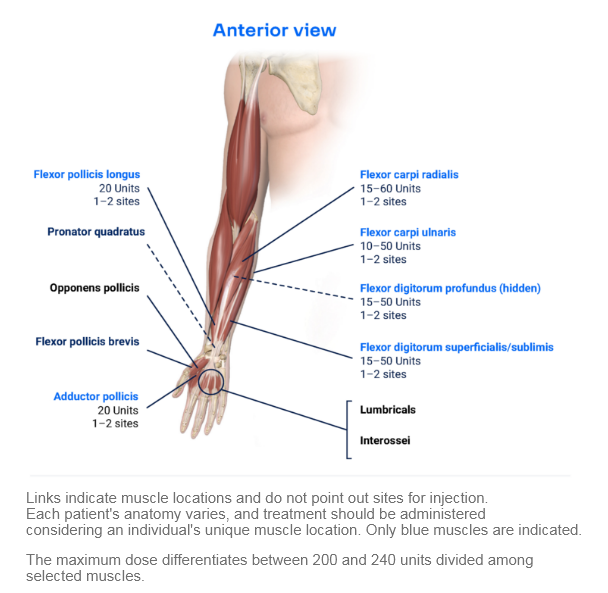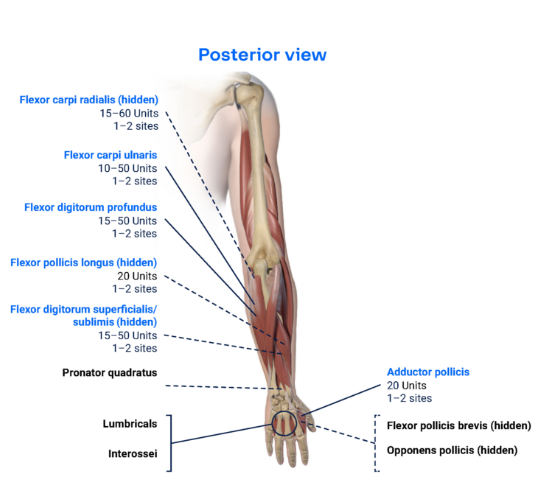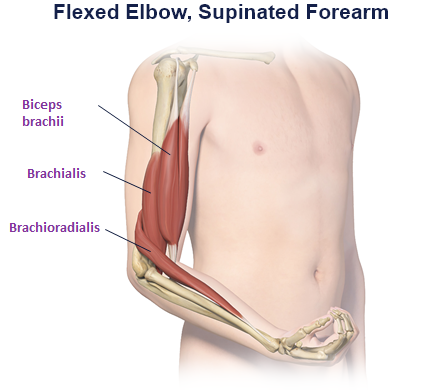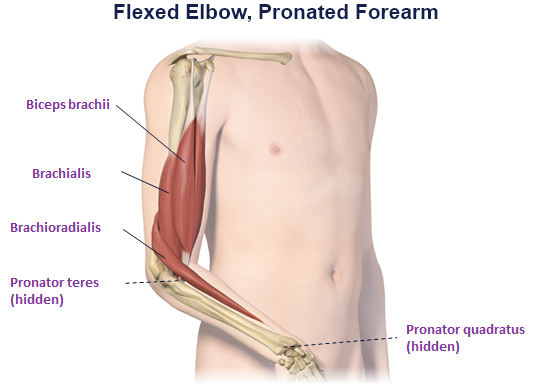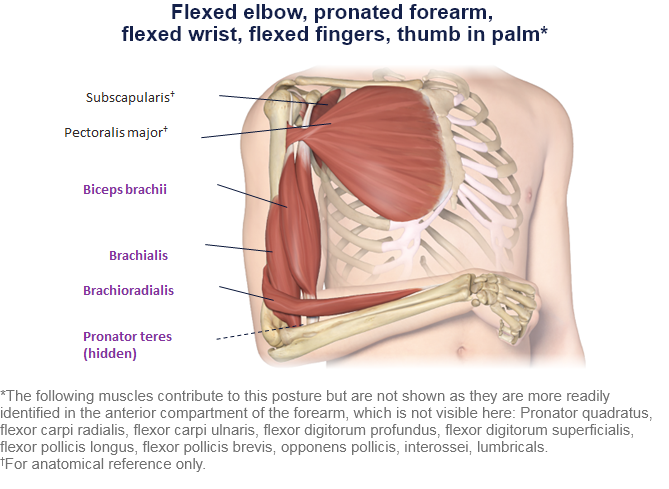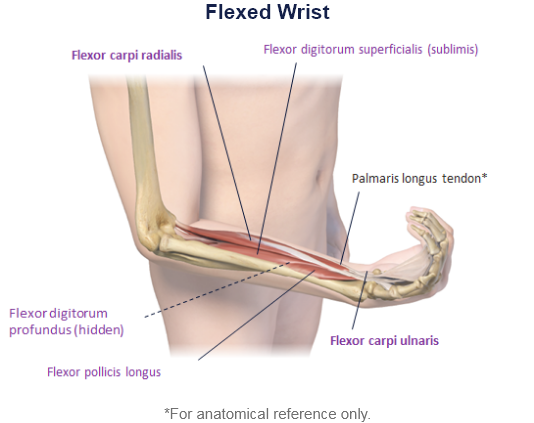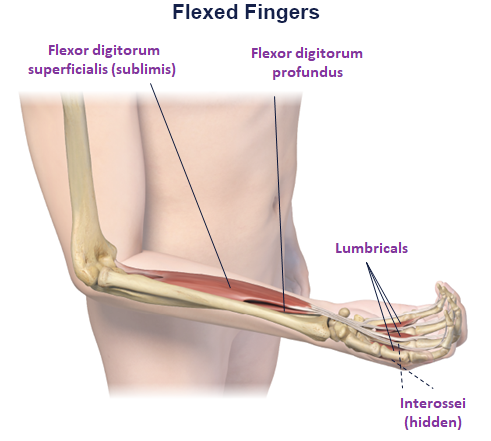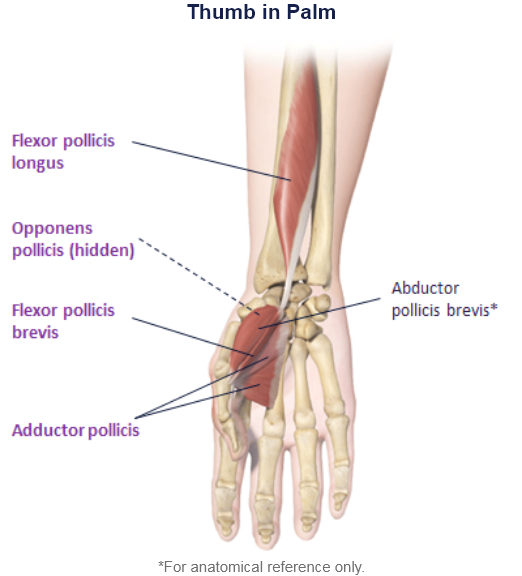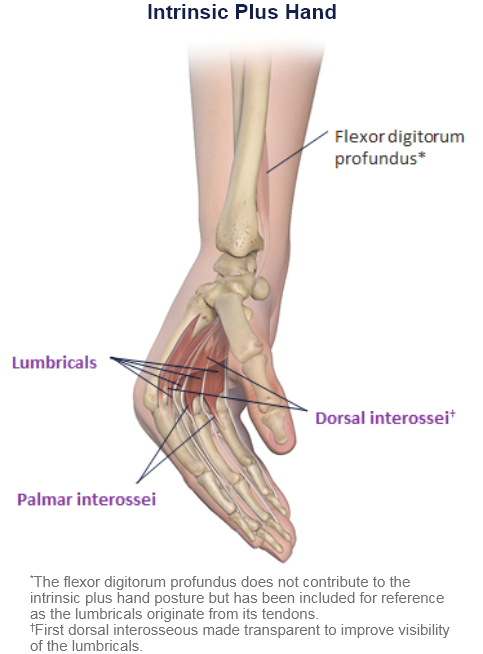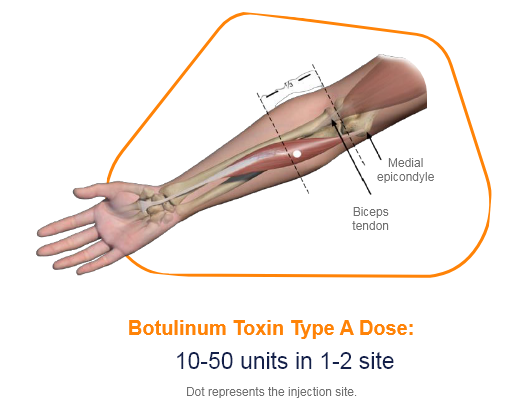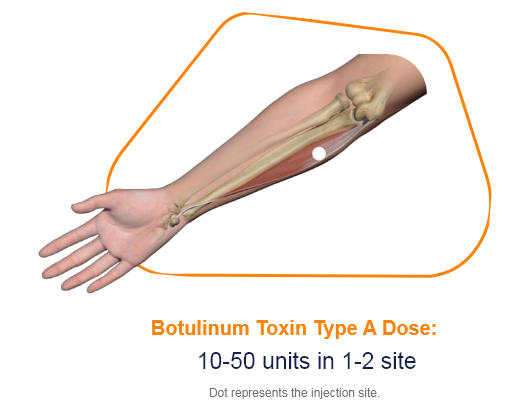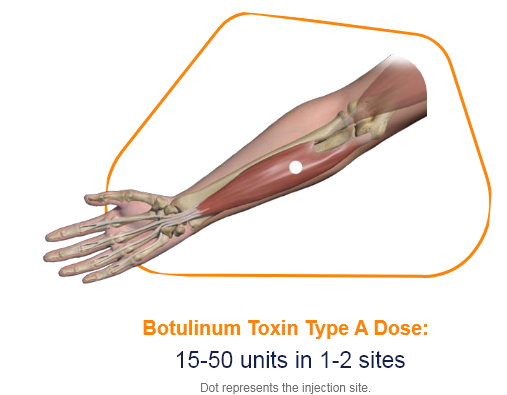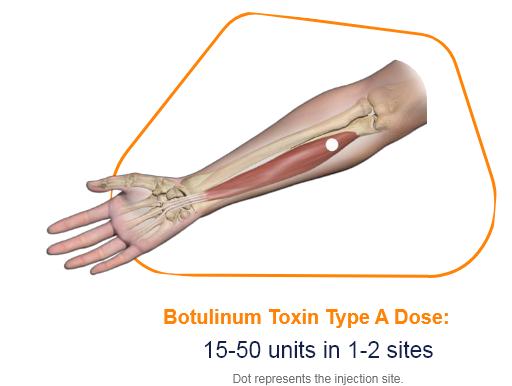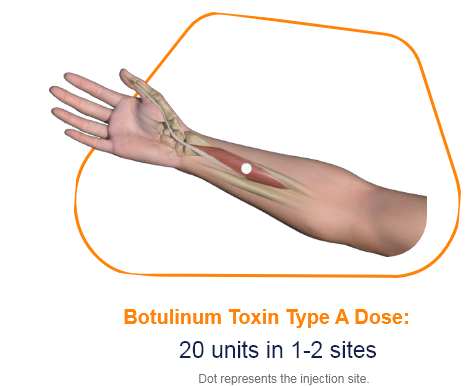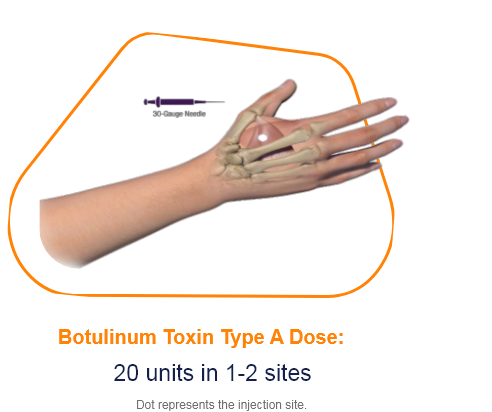Clinical Presentation Pattern and Associated Muscles
Injection Sites
Patterns and Clinical Presentations
The flexor carpi radialis muscle is lateral to the palmaris longus and has a large and prominent tendon in the distal half of the forearm.
Unlike the tendon of the flexor carpi ulnaris, which forms the medial margin of the distal forearm, the tendon of the flexor carpi radialis muscle is positioned just lateral to the midline. In this position, the tendon can be easily palpated, making it an important landmark for finding the pulse in the radial artery, which lies immediately lateral to it.1
• Function: Flexion and adduction at the wrist.2
• Origin: Medial epicondyle of humerus.2
• Insertion: Base of second metacarpal.2
• Innervation: Median nerve (C6, C7).2
.
Muscle Function Animation
.
.
Cadaver Demonstration
.
Flexor carpi ulnaris is a superficial flexor muscle of the forearm that flexes and adducts the hand. The flexor carpi ulnaris originates from two separate heads connected by a tendinous arch. The humeral head arises from a flexor tendon origin on the medial epicondyle, while the ulnar head arises from the olecranon and upper three-fourths of the subcutaneous border of the ulna by an aponeurosis. Flexor carpi ulnaris inserts on the fifth metacarpal bone, the hook of hamate, and the pisiform bone of the wrist.
Flexor carpi ulnaris inserts into the hook of hamate through the pisohamate ligament and inserts into the 5 metacarpal bone through the pisometacarpal ligament.3
• Function: Flexion and adduction at the wrist.2
• Origin: Medial epicondyle of humerus and olecranon.2
• Insertion: Pisiform, hook of hamate and fifth metacarpal.2
• Innervation: Median nerve (C7, C8).2
.
Muscle Function Animation
.
.
Cadaver Demonstration
.
The flexor digitorum superficialis, formerly known as the flexor digitorum sublimis, is the largest of the extrinsic flexors of the forearm. It forms the intermediate muscle layer between the superficial and deep muscle groups of the forearm. It contains four digital components, with a tendon that inserts onto each corresponding finger.
The flexor digitorum superficialis is the primary flexor of the proximal interphalangeal joints of the middle phalanges, but it also assists in flexion of the metacarpophalangeal joints.4
• Function: Flexion of the proximal interphalangeal joint of the second, third, fourth, and fifth fingers. Also has a weaker flexion action on the metacarpophalangeal joints of the same fingers.2
• Origin: Medial epicondyle, coronoid process, and anterior radius.2
• Insertion: Second, third, fourth, and fifth middle phalanges.2
• Innervation: Median nerve (C7, C8, T1).2
.
Muscle Function Animation
.
.
Cadaver Demonstration
.
The flexor digitorum profundus is an extrinsic hand muscle that flexes the metacarpophalangeal and distal interphalangeal joints of the index, middle, ring, and little fingers. The flexor digitorum profundus lies in the deep volar compartment of the forearm and originates from the upper three-fourths of the volar and medial surfaces of the ulna, interosseous membrane, and deep fascia of the forearm.5
• Function: Flexion of the distal interphalangeal joint of the second, third, fourth, and fifth fingers.2
• Origin: Medial and anterior surface of proximal ulna and interosseous membrane.2
• Insertion: Second, third, fourth, and fifth distal phalanges.2
• Innervation: Ulnar nerve (C8, T1) for the medial part, anterior interosseous nerve (C8,T1) for the lateral.2
.
Muscle Function Animation
.
.
Cadaver Demonstration
.
The flexor pollicis longus muscle is one of the three deep flexors of the volar compartment of the forearm. Originating on the volar surface of the proximal aspect of the radius, FPL courses along the radial aspect of the volar forearm before transitioning into a long tendinous slip that traverses deep to the transverse carpal ligament as a constituent of the carpal tunnel, and inserting distally on the base of the distal phalanx of the thumb.6
• Function: Flexion of the interphalangeal joint of the thumb.2
• Origin: Anterior aspect of radius as well as interosseous membrane.2
• Insertion: Base of distal phalanx of thumb.2
• Innervation: Anterior interosseous nerve (C7, C8).2
.
Muscle Function Animation
.
.
Cadaver Demonstration
.
The adductor pollicis muscle is an intrinsic muscle of the hand which lies in the deepest muscular plane of the palm, within the adductor compartment. It is a unique muscle, in that it is triangular shaped with a 2-headed structure.7
• Function: Adduction of the thumb.
• Origin: Second, third metacarpal, and capitate.
• Insertion: Proximal phalanx and extensor expansion of the 1st finger.
• Innervation: Deep branch of ulnar nerve (C8, T1).2
.
Muscle Function Animation
.
.
Cadaver Demonstration
.
References
1. Mitchell, Adam & drake, & Vogl, A.. (2015). Gray's Anatomy for Students, 3rd Edition.
2. Javed, O., Maldonado, K.A. and Ashmyan, R. (2022). Anatomy, Shoulder and Upper Limb, Muscles. In StatPearls. StatPearls Publishing.
3. Lung, B.E. and Siwiec, R.M. (2018). Anatomy, Shoulder and upper limb, forearm flexor carpi ulnaris muscle.
4. Okafor, L. and Varacallo, M. (2019). Anatomy, shoulder and upper limb, hand flexor digitorum superficialis muscle.
5. Lung, B.E. and Burns, B. (2018). Anatomy, shoulder and upper limb, hand flexor digitorum profundus muscle.
6. Benson, D.C., Miao, K.H. and Varacallo, M.(2021). Anatomy, Shoulder and Upper Limb, Hand Flexor Pollicis Longus Muscle. In StatPearls. StatPearls Publishing.
7. Acosta, J.R., Graefe, S.B. and Varacallo, M., 2018. Anatomy, Shoulder and Upper Limb, Hand Adductor Pollicis.



